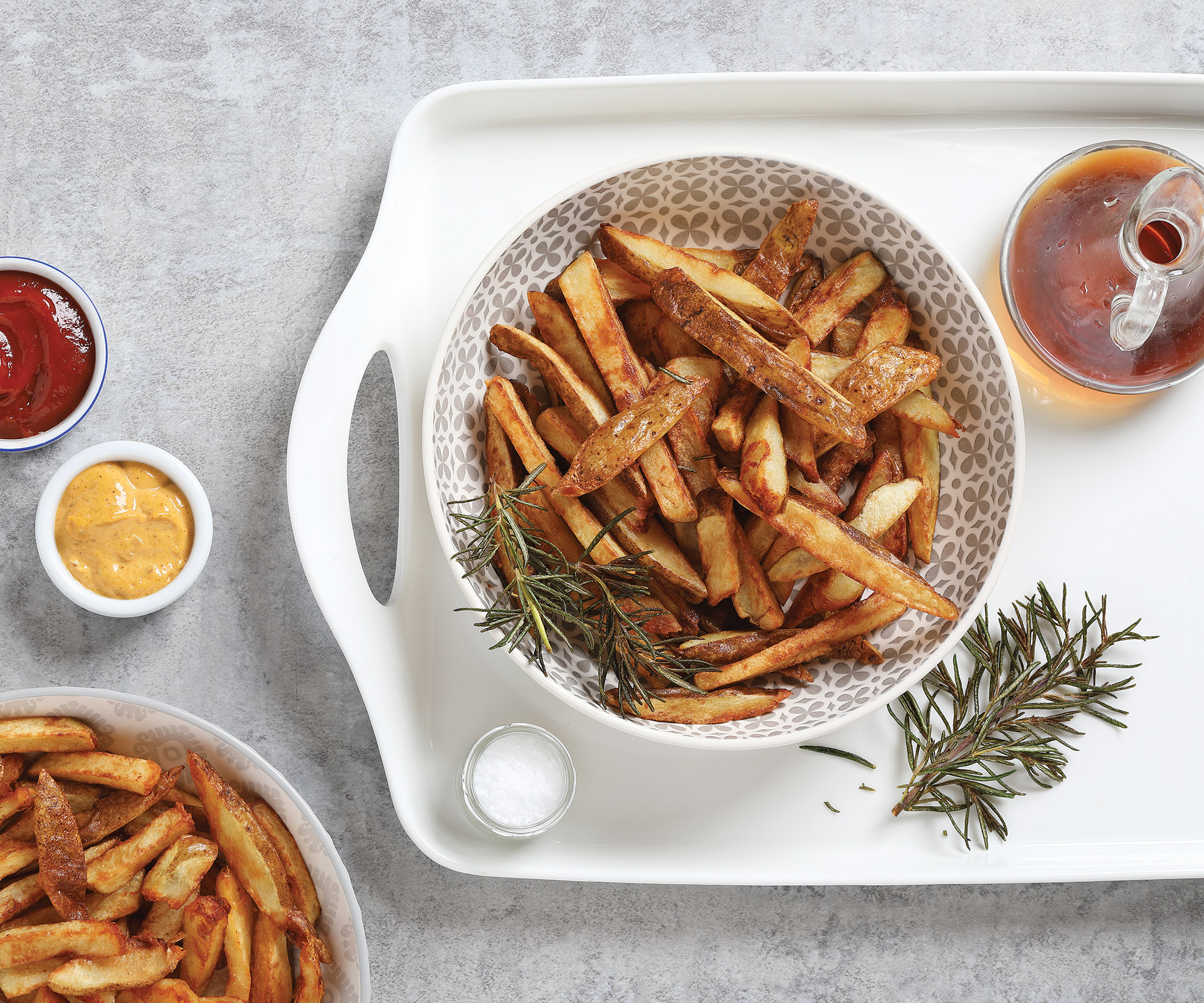A simple yet critical ingredient, canola oil is a staple in Canadian kitchens and broadens the capabilities of any home cook. Due to its popularity and many uses, canola oil accounts for more than half of all vegetable oil consumed in Canada1. Whether it’s used in a marinade, whipping up a quick salad dressing, making a pan of brownies or frying up a crispy treat, canola oil can do it all and then some in the kitchen.
A Canadian hero is born
Canola was created in the 1970’s out of the need for a more sustainable cooking oil. Using traditional plant breeding methods, Canadian researchers specifically developed the plant to be low in erucic acid, with the intention of creating a healthy oil. Fast forward to 2021 and Canadians have consumed 1,075,000 metric tonnes of Canadian canola oil and 589,000 metric tonnes of canola meal, with oil consumption continuing to rise1.
Canola oil’s many health benefits
Why does canola oil play such an important role in the world’s kitchens, food products, and restaurants? Well, thanks to its beneficial fat profile, light taste, texture, affordable cost, and high heat tolerance, it’s ideal for everyday use.
While these qualities make canola oil the go-to choice of Canadians, there is a common misconception that other seed and vegetable oils are healthier options. However, when looking at its nutritional aspects, canola oil proves to be one of, if not the, healthiest oils around.
Here’s why Canadians should be reaching for canola oil:
- Low in saturated fat
- High in plant-based omega-3 polyunsaturated fat
- A source of omega-6 polyunsaturated fat
- Rich in monounsaturated fat
- Trans fat free
An increase in scientific research also suggests that canola oil can have positive effects on several chronic health problems, including heart disease, diabetes, and metabolic syndrome. These findings also presented that:
- “Bad” (LDL) cholesterol in the blood dropped an average of 16.2% when study volunteers consumed canola oil instead of a high saturated fat diet for 2.5-13 weeks 3.
- Canola oil helped improve both blood cholesterol and blood glucose control in Type 2 diabetes patients3.
- Fat mass, as well as blood pressure, significantly decreased in those at risk of metabolic syndrome who consumed canola and high oleic canola oil3.

Cooking with canola oil
Versatility and affordability are the backbone of canola oil, as it’s ideal for cooking a wide range of foods at home and on a commercial scale. Canola oil also boasts a smooth texture and very minimal flavour, allowing the true taste of the food you’re cooking to shine through. Able to be heated to 242°C / 468°F without smoking or developing significant trans fatty acids, canola oil is ideal for sautéing and deep frying4.
Next time you’re about to prepare a meal, consider canola oil. In turn, you’ll be using an ingredient that was grown within Canada by Canadian farmers and using an oil that benefits you and your family’s health. If you’re in need of some recipe inspiration, look no further than our recipe database, full of breakfasts, amazing lunches, dinners, desserts and everything in between, featuring yours truly – canola oil.
Sources
- Canola Council. Top Markets. www.canolacouncil.org
- Nutrition Reviews 2013, 71: 370-385; Diabetes Care 2014, 37:1806-1814; Obesity 2016, 24:2261-2268.
- Canola Council of Canada. Canola Oil. www.canolacouncil.org
- Manitoba Canola Growers. Edible and Non-Edible uses of Canola. canolagrowers.com







